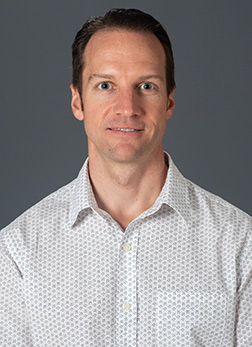Expert Commentary: Al Kopak, PhD, Criminology
Want to Make Our Communities Safer and Reduce Overdose Deaths? Start in the Local Jail
You may have a story about Peter, while someone down the road has a similar story about Rose. Mine starts with George, my cousin who died at the age of 38 from an opioid-related overdose.
Such a tragic event will make anyone with a heart pause and reflect, but this is a special case. I am a criminologist who studies drug use in the criminal justice system, and I have thought long and hard about how George’s experience reflects our failure to implement practices designed to reduce crime, enhance public safety and strengthen our communities. We have opportunities to do a better job and change these stories.
George was arrested and booked into the Miami-Dade County Jail for drug possession on Aug. 16, 2017. He was released on bond the following day and immediately found his way to a nearby drug-treatment center. He was desperately looking for help.
Like many adults with a substance use disorder, George had his fair share of brushes with the law. He stole fishing rods off docked boats so he could sell them and get money to finance his costly drug use. He spent several short spells in South Florida jails, none of which addressed the primary cause of the crimes he committed.
The criminal justice system operates on the principle that individual will is the sole determinant of behavior. If the defendant wants to stay out of jail, avoid a probation violation or make it to the next court date, then he’ll make it happen. This approach seems to suffice, until the gaps in the system prove otherwise.
When George arrived at the drug-treatment center, he was turned away because the facility was full. His pleas for a bed and necessary medical care were not enough to grant him admission. With nowhere else to go, George checked in to a cheap motel to wait for a spot at the treatment center. He was motivated to get clean, but this motivation was overwhelmed by the natural inclination to avoid the agony of opioid withdrawal.
George found himself waiting for something that may take a few days or a few weeks. He had little hope and nothing to distract him from the thought that the odds were against him. It doesn’t take a lot of imagination to understand why he would take the only item of value, his phone, and trade it for a bag of heroin. Put me in that situation and I’d do the same thing.
What George didn’t know was that the heroin was laced with fentanyl, a synthetic opioid analog that is 100 times more potent. He injected the mixture and experienced that euphoric sensation one last time. George was found dead on Aug. 23, not even one week after being released from jail.
The majority of adults who are booked into our local jails meet diagnostic criteria for moderate to severe substance use disorder, with methamphetamine and opioids leading the charge. To make matters worse, a significant proportion report recent injection of drugs. It’s the most dangerous form of administration, and it skyrockets the probability of an overdose.
Think about it: the most at-risk population is also captive, at least for a short period, and we need to act quickly. The first step is to systematically conduct comprehensive assessments to determine who is eligible for treatment services. This is rarely done, largely because of the lack of qualified personnel. The information we have gathered comes from local initiatives led by Western Carolina University researchers and has been used to implement a variety of programs, but all jails should have this as standard protocol.
Once this information is collected, adults with substance use disorders can receive information about laws regarding reporting overdoses, programs to test heroin for potentially deadly adulterants and available treatment programs with open beds, and they can make links to social services required at the time of release.
Instead of passing the time idly, detainees should be sitting at desks getting informed. Basically, the brief jail stay should be used to educate and initiate the pathway to recovery. Sure, not all will participate, but there are a lot of Georges out there, and the failure to provide help when it means the most is truly fatal.

About the Author
Albert M. Kopak is an associate professor in the Department of Criminology and Criminal Justice at Western Carolina University.
In partnership with the Jackson County Community Foundation’s opioid and addiction awareness campaign, WCU’s Center for the Study of Free Enterprise is hosting a town hall focused on the opioid addiction crisis Thursday, Oct. 3.

